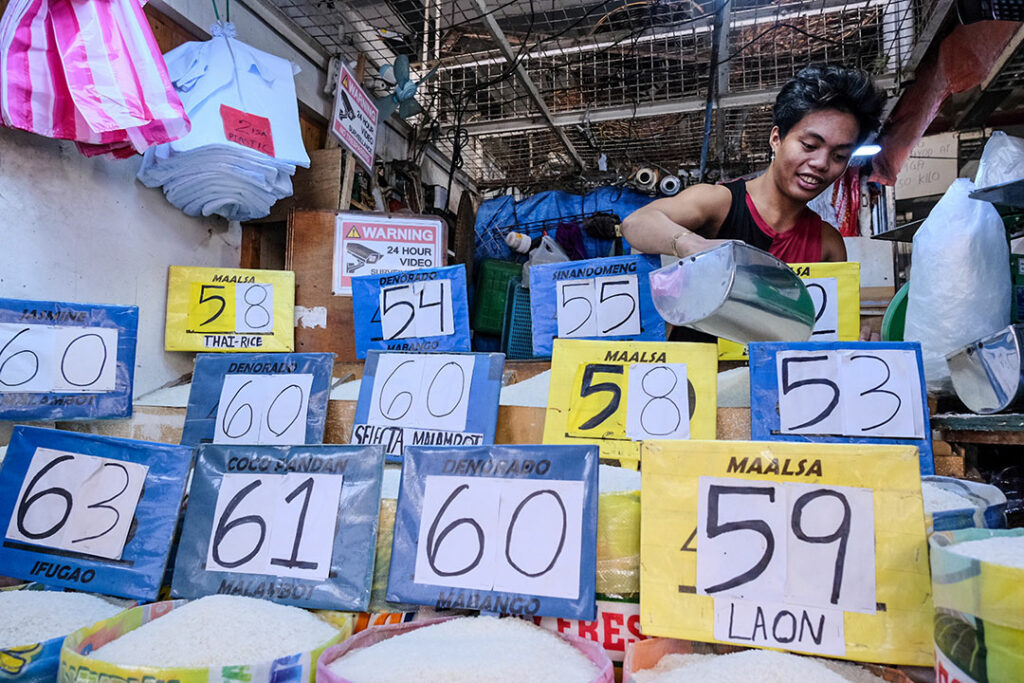




Philippines Trade Update: Trade trajectories trend along
 DOWNLOAD
DOWNLOAD

Policy Rate Updates: Double cut finale
 DOWNLOAD
DOWNLOAD

Monthly Economic Update: One for the road
 DOWNLOAD
DOWNLOAD


Inflation uptick seen in March — BSP

Headline inflation could have quickened further to 3.9% in March due to positive base effects, Bangko Sentral ng Pilipinas (BSP) Governor Eli M. Remolona, Jr. said on Wednesday.
“It would be close to 4%,” Mr. Remolona told reporters on the sidelines of an event. “I think 3.9%, but we’ll see.”
If realized, inflation would be faster than the 3.4% print in February but slower than the 7.6% in March 2023. This would also mark the second straight month that inflation accelerated on a monthly basis.
However, inflation would remain within the BSP’s 2-4% target range for a fourth straight month.
The BSP expects inflation to average 3.6% this year.
Asked if the BSP would keep policy settings unchanged at its next meeting, Mr. Remolona said the Monetary Board will look at the data.
“We’re trying to make our models better,” he said in mixed English and Filipino. “So, I think we will act with more confidence as before.”
At its February meeting, the BSP kept its benchmark rate steady at a near 17-year high of 6.5% for a third straight meeting. The central bank has raised borrowing costs by 450 basis points (bps) from May 2022 to October 2023 to tame inflation.
The Monetary Board’s next policy review is scheduled for April 4.
Meanwhile, Mr. Remolona said the central bank is “closely” watching the US Federal Reserve’s next move, but its own monetary policy decisions will not be dependent on the US central bank.
“We don’t have to wait for them. We watch them very closely. We read the statements and what the different members of the FOMC (Federal Open Market Committee) say and that’s data for us,” he said.
The FOMC was expected to announce a rate decision at the end of its two-day meeting on Wednesday. The US central bank hiked the fed funds rate by 525 bps from March 2022 to July 2023 to the 5.25-5.5% range.
“We don’t have to put a lot of weight to what they (Fed) do, unless the markets go crazy, unless they overreact, the peso somehow weakens sharply then we have to react more decisively. But we don’t expect that,” the BSP chief said.
The local unit closed at PHP 56.13 per dollar on Wednesday, weakening by 21 centavos from its PHP 55.92 finish on Tuesday, Bankers Association of the Philippines data showed.
This was the peso’s weakest close since its PHP 56.20 per dollar finish on Feb. 29. Year to date, the peso weakened by 83 centavos or 1.5% from its PHP 55.37 per dollar finish on Dec. 29.
“And so, in our case, when we start to cut, we are also likely to cut in the next few policy meetings,” Mr. Remolona said, adding that BSP would likely cut faster than the Fed.
The BSP chief also reiterated that he still wants to lower the banks’ reserve requirement ratio (RRR).
“It’s just a question of when. It’s kind of awkward to lower it at a time when we’re still hawkish. That tends to be an easing measure,” he said.
“But we will eventually lower it because it’s not just a monetary policy measure. It’s an efficiency issue in terms of financial intermediation.”
In June last year, the BSP slashed the ratio for big banks and nonbank financial institutions with quasi-banking functions by 250 bps to 9.5%. However, Mr. Remolona had earlier said that the 9.5% rate is still “not low enough.”
The BSP has brought down the RRR for big banks to a single-digit level last year from a high of 20% in 2018. — Aaron Michael C. Sy
This article originally appeared on bworldonline.com





 By BusinessWorld
By BusinessWorld